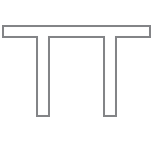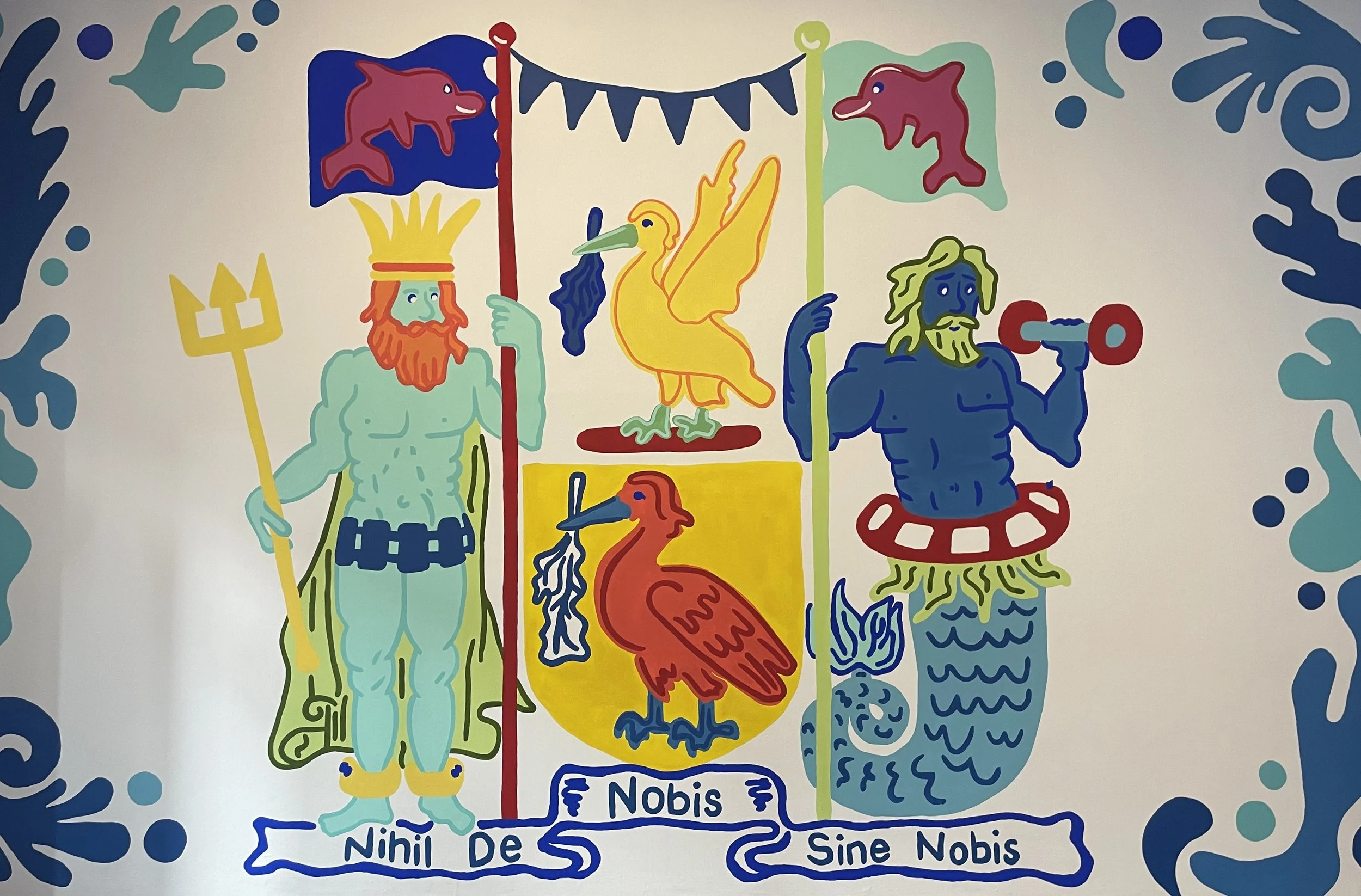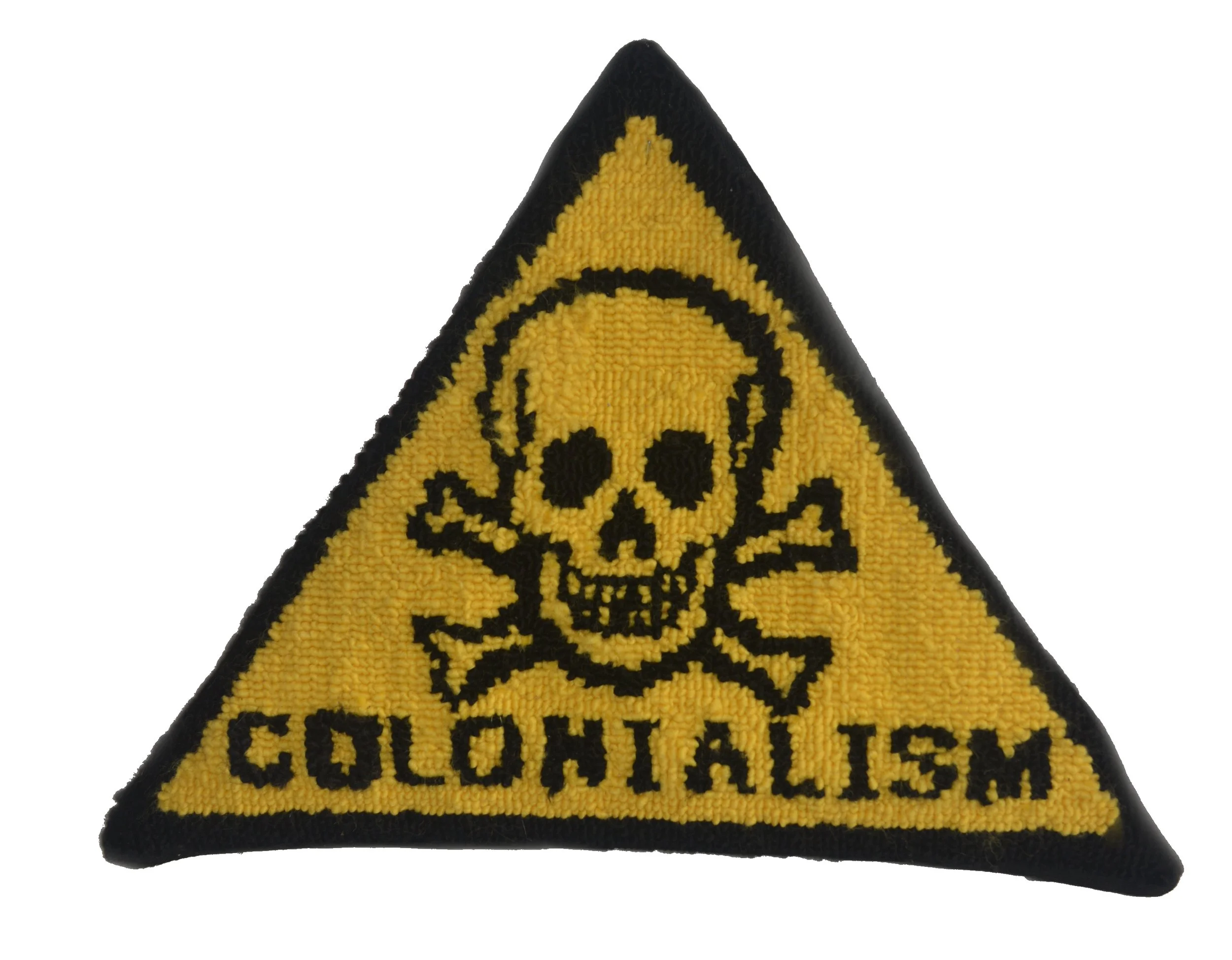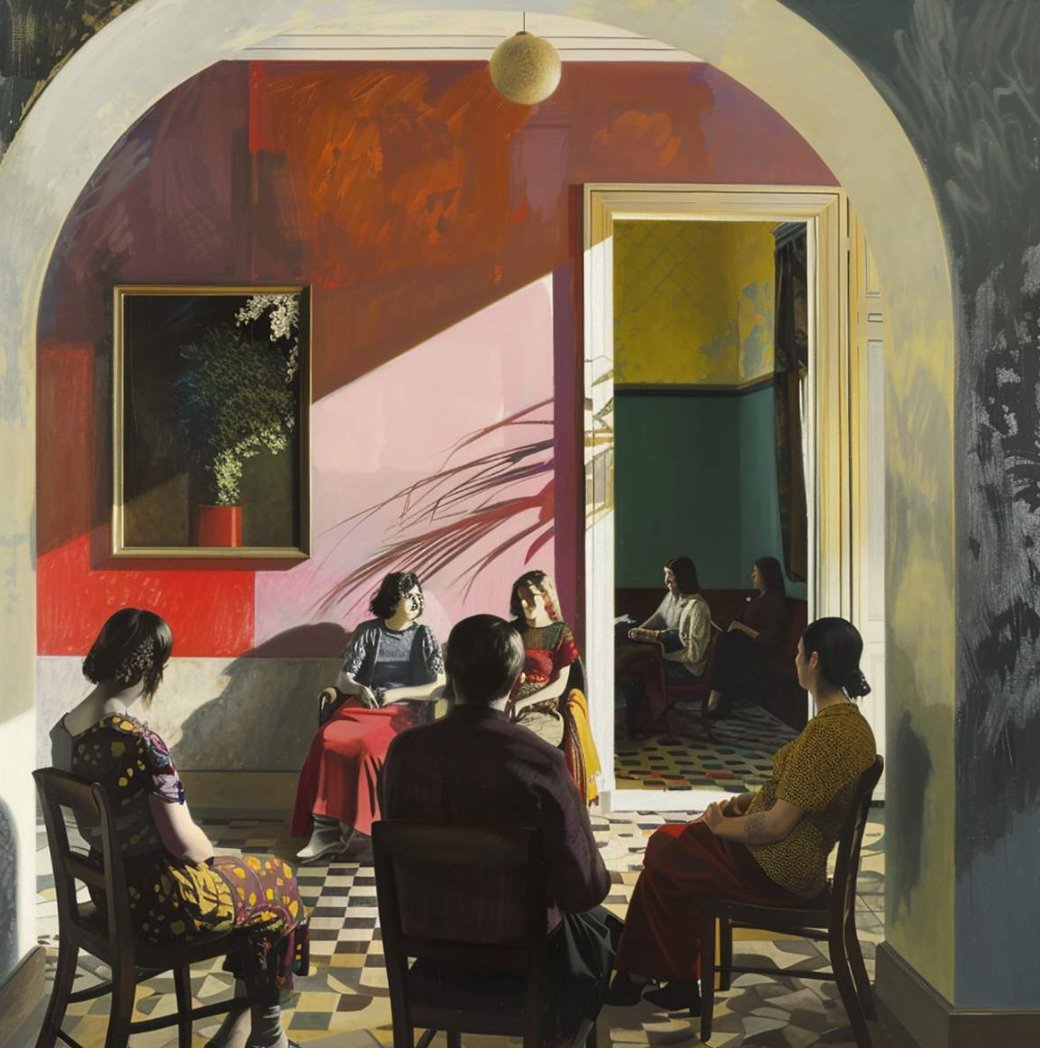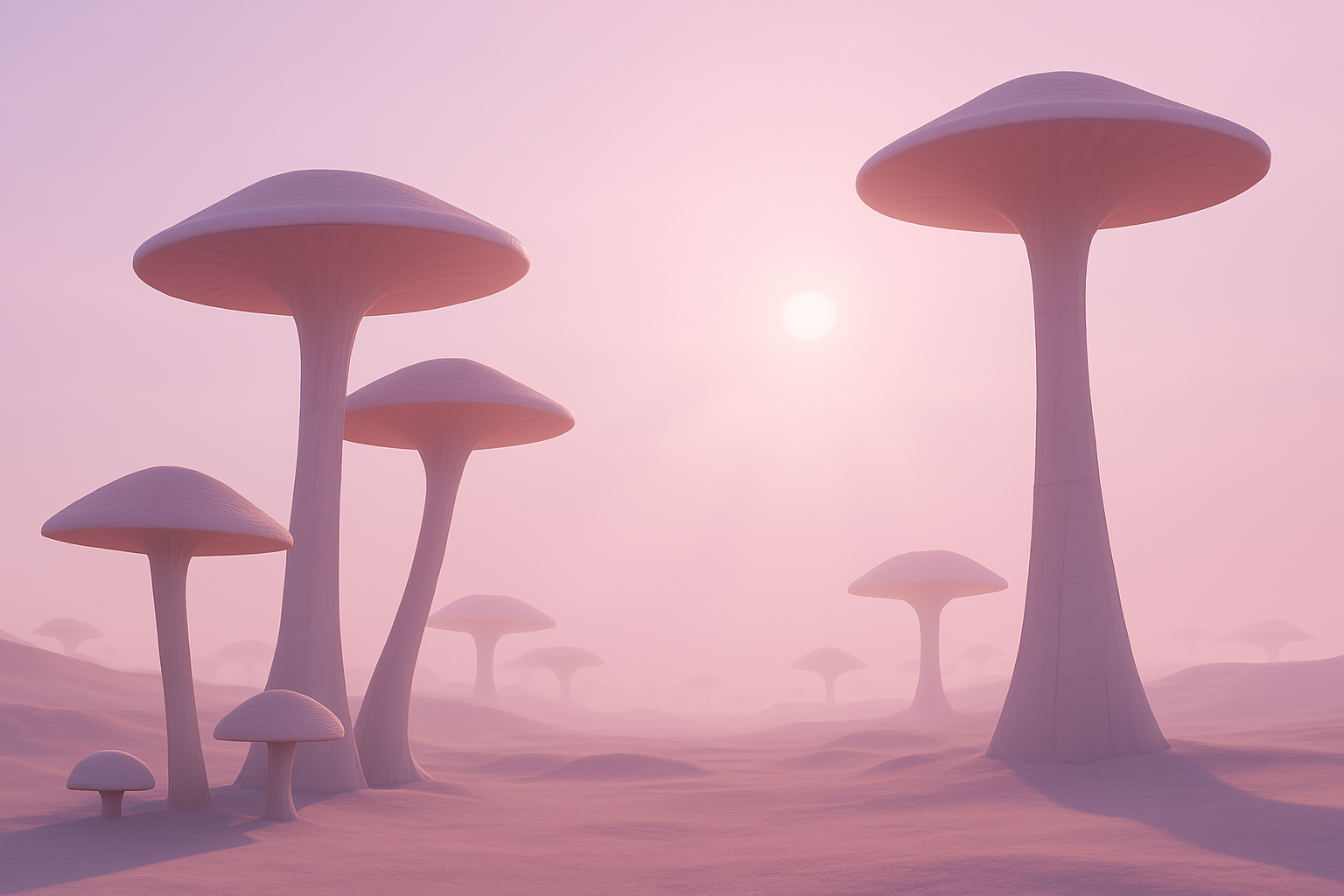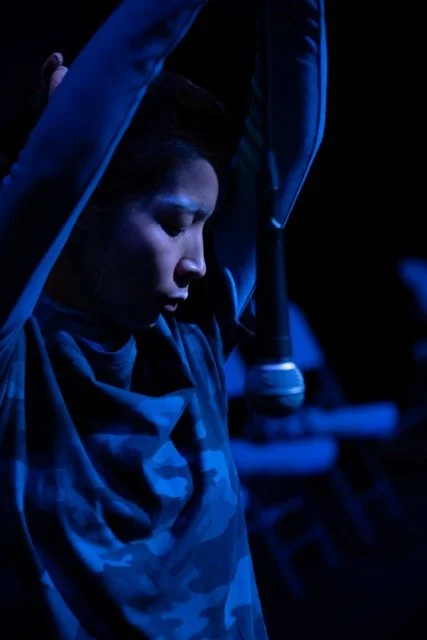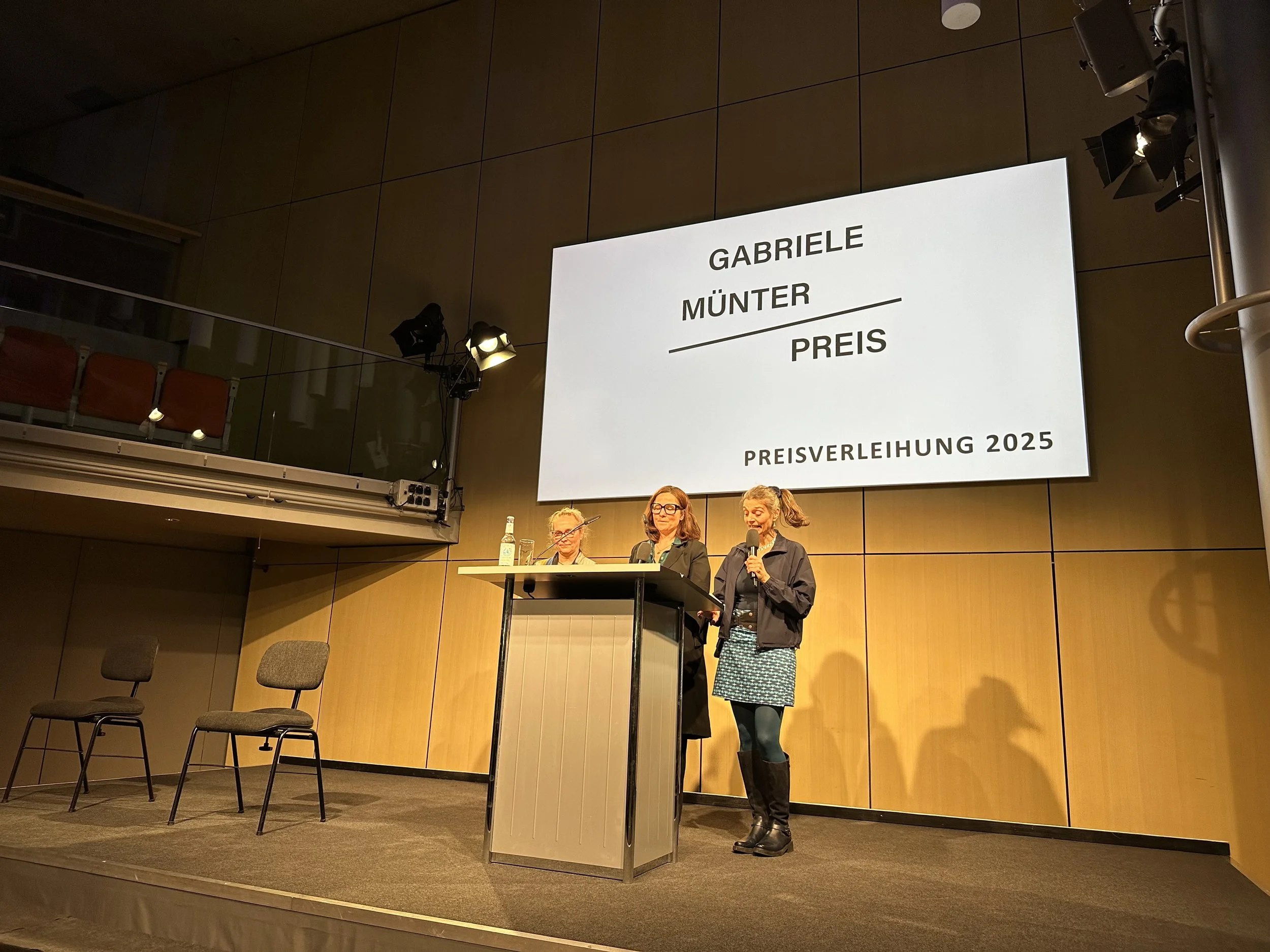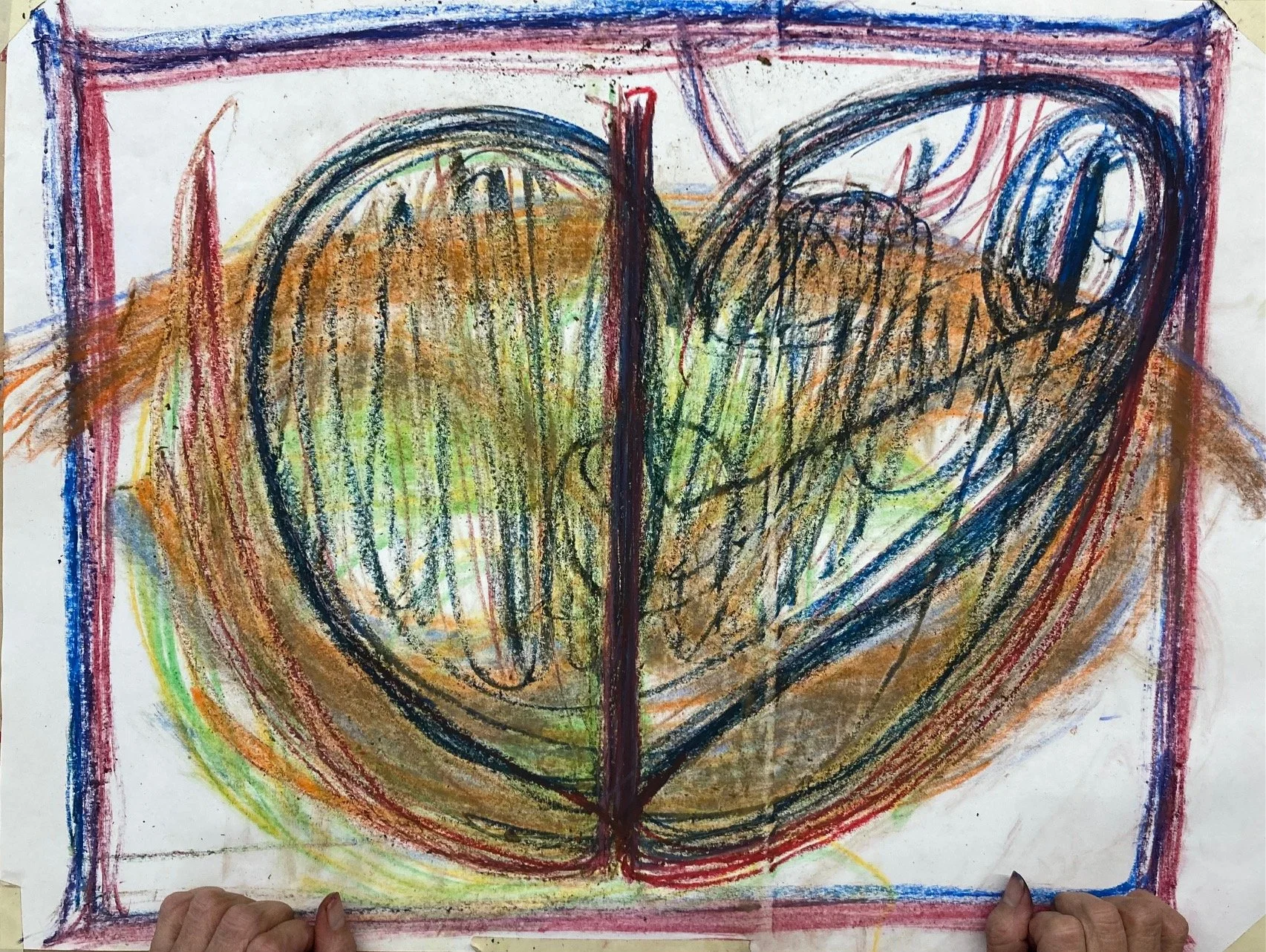Image: Aleks Slota, Liverpool 2024
programme
All London sessions will take place in lsbu’s borough rd building unless otherwise stated.
‘AA’ indicates student-led sessions as part of the anthologies assembly.
Outside the tt community? sign up for public sessions here by 15 july.
click here for a visual schedule.
Monday 14 July
8:00 - 10:00
aa Exhibition Installation period (borough Rd Gallery + studio 6)
10:00 - 11:00
Residency orientation with lsbu partners + facilities tour (Studio 7)
11:00 - 12:00
beuys sticks with michael bowdidge (studio 7)
12:00 - 13:15
lunch
13:15 - 13:45
AA: giving and receiving feedback: liz lerman’s critical response process with jisun myung (BR320)
13:50 - 14:20
AA: What is Inclusive and Accessible Art Activism? With Britta Fluevog (BR320) PUBLIC
14:25 - 15:05
AA: generative ai and the art museum: digital circulation, museum practice and cultural value with Sami Itävuori (Borough Rd Gallery) PUBLIC
15:15 - 16:15
AA: Talk with Gina Dominique and Anne Sophie Lorange (Borough Rd Gallery)
16:15 - 16:45
AA: cybernetics and cultural noise: on exhibiting computational art with Beatrice Taylor Seale (Borough Rd Gallery) PUBLIC
17:00 - 17:30
AA: talk with Riordan Regan (Borough Rd Gallery)
17:30 - 20:00
aa Exhibition Installation period & opening reception + un-performance (Borough RD gallery + studio 6)
tuesday 15 July
8:50 - 9:00
day intro (Borough Rd Gallery)
9:00 - 10:00
AA: altruism and open source with Sandra Becker (Borough Rd Gallery)
10:05 - 11:05
AA: astro-animation: engaging public audiences in astronomy through animation with Laurence Arcadias (BR320) PUBLIC
10:05 - 11:05
AA: bilateral mark making and the nervous system with Stefanie Denz (BR301) PUBLIC - max. 12
11:15 - 12:15
artist talk with alan warburton (BR320)
12:15 - 13:30
lunch
13:30 - 16:30
xr studio workshop with kristina pulejkova (XR Studio, LSBU Hub building -100 London rd)
17:00 - 18:30
the long conversation panel session with tt faculty (BR320) PUBLIC
wednesday 16 July
9:20 - 9:3o
day intro (borough Rd gallery)
9:30 - 10:30
AA: Listening for a Lexicon with Ali Williams (Borough Rd gallery) PUBLIC
9:30 - 10:30
AA: Play and Speak: How Playful and Creative Practices Can unlock the voice of children with selective mutism with Phei Phei Oon (BR320)
10:40 - 12:20
AA: The Body That Dissolves Instead: Soft Rehearsal on Invisibility, Refusal, and Other Sensuous Futures with He Jin Jang (Studio 6) PUBLIC
11:20 - 12:20
AA: Redefining Creativity: A Phenomenological Inquiry into the Role of Personal Agency in Individual Practice with Chandana Dixit (BR320) PUBLIC
12:20 - 14:00
lunch + travel to whitechapel gallery (77-82 Whitechapel High St, London E1)
14:00 - 17:00
whitechapel gallery tour
thursday 17 July
10:20 - 10:30
day intro (br320)
10:30 - 12:30
drawing workshop with simon terrill (Br320) - max. 20
12:30 - 14:00
lunch + Travel to Lada (Live art development agencY) (The Garrett Centre, 117A Mansford Street, London E2)
14:00 - 17:00
visit to lada study room
18:00 - 18:30
AA: Film screening by Carlos Llerena Aguirre (studio 6)
18:30 - 20:00
aa exhibitions de-installation session (Borough rd gallery + studio 6)
friday 18 July
8:00 - 10:00
aa exhibitions de-installation session (Borough rd gallery + studio 6)
9:50 - 10:00
day intro (br320)
10:00 - 12:30
workshop with diasporas now (br320)
12:30 - 13:30
Lunch + optional journal meeting with Michael Schwab - LSBU CAFE.
NOTE: TIGHT SCHEDULE. JOURNAL MEETING MUST END AT 1:30 SHARP.
13:30 - 13:45
break
13:45 - 15:00
Talk - Contemporary Research: Issues of Articulation with Michael Schwab (Br320)
15:00 - 16:00
Travel to serpentine Galleries (kensington gardens, London W2)
NOTE: WE MUST LEAVE AT 3 PM SHARP. IT WILL TAKE A FULL HOUR TO ARRIVE AT SERPENTINE GALLERy. THE TALK begins at 4 PM.
16:00 - 18:00
Visit to serpentine Galleries
Talk with Tamar Clarke-Brown
saturday 19 July
self-led london excursions
travel to Liverpool
sunday 20 July
11:00 - 13:00
Tour: insights of the Liverpool Biennial tour with gabriela saenger silva
14:00 - 18:00
Self-led tours of liverpool biennial - ALl Venues
15:00 - 17:00
liverpool arab arts fest Family Day (Sefton Park Palm House)
Monday 21 July
11:00 - 12:30
Liverpool Biennial tour with Marie-Anne McQuay, Curator
14:00 - 16:00
tour of ‘what the mountain has seen,’ erl + Talk with Christine eyene
16:00 - 18:00
optional meetings with ljmu supervisors
‘PhD surgery’ Clinic with Michael bowdidge - book 30 min 1:1 slots here
18:30
residency closing dinner (Buyers club)
EXHIBITIONS
Image credit: London South Bank University (LSBU) Archives
Anthologies Assembly Exhibition 2025: Bridge Without
We are pleased to announce BRIDGE WITHOUT, an experimental and process-oriented exhibition for the Transart Institute 2025 PhD Residency, embracing the transnational character of the program to foster imaginative potential and provide a nourishing environment for connection and exchange.
The framework of this exhibition centres on investigation as rigorous pursuit and introspective exploration. Invoked in the works of the exhibition is investigation as a generative action in the consideration and analysis of our roles as practice-based researchers, many of which invite viewers to contribute objects and artifacts and interact as participants in projects-in-process throughout the four days of the exhibition.
At this moment in time, investigation may evoke a heightened sense of threat and being watched-observed-erased that many of us feel collectively and/or individually. We invoke investigation as an artistic articulation of anxieties related to surveillance, invalidation, and contemporary socio-political pressures.
But from its etymological roots, investigation may be visioned as a tracing towards something no longer present, a turning-towards truths and narratives hidden or lost in time, a nuanced examination of practices and ritual, be they cultural, political, or personal. We explore concealment and evasion as artistic strategies, ways of eluding investigation and leaving no trace.
As we query in this exhibition how we conduct investigation in our work as artistic researchers, we forage for methodologies that transcend aggressive and invasive research practices, gleaning instead the synthesis of discovery-through meticulous examination and making-with verification.
We interrogate the ethics of disclosure, ownership, and the nature of hidden knowledge - are there secrets or kinds of information that should remain hidden from artistic research? Do the ethics of our work require us to conceal as much as reveal, depending on the nature of the investigation and who is doing the investigating? Are there things that should remain concealed from or in our own research - or even from us, as we inhabit the role of investigator?
———————
In direct reaction to the rhetoric and actions of erasure espoused by the current American administration as elsewhere, we would like to emphasise that we champion intersectionality, difference, and co-relating.
That we encourage marginalised perspectives across ethnicities, genders, sexual orientations, abilities, and socioeconomic backgrounds and advocate for embodied approaches that prioritise personal needs alongside conventional academic and artistic paradigms.
———————
Location: Borough Road Gallery + Studio 6
Opening Reception: Monday 14 July, 6:30-8:00pm
Gallery Open Hours: Tuesday 15 July, 1:00-4:00pm; Thursday 17 July, 10:00am-12:30pm
Workshops and Tours
workshop - Beuys sticks
with Michael Bowdidge
Image: Michael Bowdidge, 2019
Derived from an exercise developed by the German artist and social sculptor Joseph Beuys, this quiet, turn-based creative activity occupies a space somewhere between improvised collaborative sculptural drawing, reflective creative pedagogy and the gentle gathering of somatic awareness over time.
Participants should expect to spend some time standing, if they feel able to and also anticipate some gentle movement from time to time, however the exercise can and will be made accessible for any participants who may find these aspects of the exercise challenging.
No equipment will be required, and the session should be viewed as phone-free space, except for the purposes of documenting the process, which will only take place at specific points in the exercise.
bio | Site
— — —
talk - image empire
with alan warburton
Image: RGBFAQ (2020) by Alan Warburton
This talk will reflect on the subject of Alan's practice-focussed PhD project, 'Rendering Work at the Bleeding Edge' which began in 2020 with the production of a multimedia exhibition that investigated the past, present and future of computer graphics. Revisiting this work, Alan will offer a concise summary of some of the most important discoveries made during the research, focussing particularly on the interplay of sampling and simulation within contemporary deep learning applications and XR technologies.
A globally-recognised creative technologist working with CGI, AI, XR, VR and ML between art, industry and academia, Best known for his critical video essays which are fixtures in university curriculums worldwide, he’s undertaken lectures and residencies at Central St Martins, Somerset House, the ICA, the Science Gallery, the V&A, Carnegie Mellon, the AA School and presented at many creative tech events. He has had solo exhibitions at Arebyte and The Photographers’ Gallery and been involved in landmark group shows at Carnegie Museum of Art, Baltic Gateshead, RMIT amongst others.
Notable recent partnerships include 2023’s The Wizard of AI (commissioned by the Open Data Institute and featured in the Guardian), and 2021’s Better Images of AI, where he helped launch an inuential stock image collection alongside the BBC R&D to counter obfuscatory myths of AI. Over the same period, he completed his PhD at Birkbeck’s Vasari Centre, a practice-led project that extrapolated on themes from the 2020 solo exhibition RGBFAQ and considered how multi-modal synthetic datasets inform the operation of machine vision systems.
more info
site
— — —
workshop - Worldbuilding: making virtual worlds with vr and ai
with kristina Pulejkova
Image: Kristina Pulejkova, AI-generated image using Runway ML
This interdisciplinary workshop invites students to explore the art and science of worldbuilding through the lens of Virtual Reality (VR) and Articial Intelligence (AI). Bridging creative design with cutting-edge technology, the session provides a structured introduction to the principles, tools, and methodologies used to craft immersive digital environments. Participants will engage with foundational concepts in narrative design, spatial storytelling, procedural generation, and human- computer interaction.Through hands-on activities and collaborative exercises, students will learn how AI can support the generation of dynamic content and design - such as terrain, architecture and characters. This session will be followed by work in VR, using drawing tools to prototype interaction design for embodied experiences. By the end of the workshop, students will gain practical skills in designing immersive, virtual worlds and a deeper understanding of how emerging technologies are reshaping digital storytelling, simulation, and experiential learning.
syllabus
site
— — —
Interview session - The Long Conversation
with TT Faculty and Guests
Image: Aleks Slota. Liverpool Residency 2024.
The Long Conversation is a series of short, timed interviews between Transart faculty Carolina Rito, Alessandra Cianetti, Geoff Cox, Elena Marchevska, Tōmei Bacon and guests Huma Mulji, Liz Day about their creative research praxes. A Q&A will follow.
— — —
tour - Whitechapel Gallery
Participation and Exhibition Programmes
Image: Moving Grounds 15 Years of Duchamp & Sons, Whitechapel Gallery, 2025 © Anne Tetzlaff
This workshop will offer an introduction to the Participation programme at Whitechapel Gallery in East London - considering the histories, geographies and values that underpin the programme. The session will also include a tour of the Gallery's main summer 2025 exhibition 'Hamad Butt: Apprehensions'.
The session aims to explore what 'participation' means in a contemporary art gallery and how a public art institution in East London might respond to our current moment. There will be seminar-style discussion as well as an opportunity explore Whitechapel Gallery's summer exhibitions programme.
more info
site
— — —
Workshop - Drawing Assemblages: toward a grammar of the crowd
with simon terrill
Image: Simon Terrill, Swarm, type C print, 1.8m x 2.4m
This drawing workshop invites participants to engage with ideas drawn from the 'Networked Crowds' project though posthumanism, fine art, and participatory practices. Together, we will test out a series of speculative propositions using drawing as both medium and method to explore the crowd as process and verb within a set of fluid, recursive feedback loops.
Working with Elias Canetti’s four attributes of the crowd - growth, equality, density, and need for direction - alongside ideas of hospitality, conviviality, and chance, we will investigate how a collective drawing can become a method of mapping emergent forms of sociality.
This is not a drawing class. No technical skill required. Rather, the workshop is closer to a live social sculpture and occasion for experimenting with how collectivity moves, gathers, and leaves a trace.
syllabus
site
— — —
TOur - Live art development agency (LADA) study room
Image: Alex Eisenberg, courtesy LADA.
Located in East London’s Bethnal Green, LADA is a centre for experimental and live art. Their Study Room is a collection of over 8,000 items or research materials on live art, including out-of-print books and rare performance documentation.
Following a staff introduction and tour, centre Director Mary Osborn will lead a discussion on the histories of Live Art and LADA itself, what's in the collection, and beyond. There will additionally be research time in the Study Room, and LADA staff will be on hand to help you find books and materials related to your research interests.
The workshop will consist of
Introduction to LADA and the Study Room collection, its history and methodologies for developing Live Art research and practice
Short screenings from video works exclusive to LADA’s collection
Peer and group discussion tasks centred around core elements of Live Art using materials in the LADA collection
About Mary Osborn
Before joining LADA as Director in October 2024, Mary Osborn (she/her) built a reputation for ambitious interdisciplinary live art programmes and projects as a producer, programmer and curator, with a particular emphasis on artist practice and development. She produced projects and programmes with Artsadmin, co-led Steakhouse Live DIY performance platform, curated international programmes through her curatorial duo osborn&møller and shaped Battersea Arts Centre’s commissions and creative development programmes.
About LADA
About the Study Room
— — —
Workshop - Swarm Symposium
with Diasporas Now
Image: Minor Attractions for Frieze London with Lulu Wang and Rieko Whitfield - Photography by Isabelle Tilli
This participatory symposium, facilitated by live art platform for the Global Majority Diasporas Now, explores the emergent art of sustaining long-term collaborations and cultural movements through the lens of swarm intelligence: pollination networks toward cross-disciplinary collaboration, murmurations and magnetoreception for intuitive leadership, and mycelial strategies in creative entrepreneurship.
Diasporas Now is a practice-based collective grounded in lived experience, and artistic experimentation – led by the belief that “community building is to the collective as spiritual practice is to the individual” (as referenced in Adrienne Maree Brown’s 2017 book, Emergent Strategy).
Each artist-researcher and co-founder from the collective – Rieko Whitfield, Paola Estrella, and Lulu Wang – leads one area of inquiry, offering a conceptual provocation and a reflective, practice-led exercise.
syllabus
site
— — —
talk - contemporary research: issues of articulation
with michael schwab
Image: JAR-online.net
Michael Schwab is a London-based artist and artistic researcher who investigates postconceptual uses of technology in a variety of media including photography, drawing, printmaking, and installation art. He holds a M.A. in philosophy (Hamburg University) and a PhD in photography (Royal College of Art, London) that focuses on post-conceptual post-photography and artistic research methodology. He is the founding Editor-in-Chief of the Journal for Artistic Research (JAR), co-editor of Intellectual Birdhouse. Artistic Practice as Research. (2012), co-editor of The Exposition of Artistic Research: Publishing Art in Academia (2013), editor of the book Experimental Systems. Future Knowledge in Artistic Research (2015) as well as the editor of Transpositions. Aesthetico-Epistemic Operators in Artistic Research (2018) and co-editor of Futures of the Contemporary. Contemporaneity, Untimeliness, and Artistic Research (2019). Through a focus on experimentation and the exposition of practice as research, Schwab has developed a conceptual approach that links artistic freedom with academic criticality.
In most cases, artistic research still must navigate a tension between epistemic and artistic demands. Occupying a middle ground is often not satisfactory leading to questions regarding the quality of artistic research outputs either in terms of science or art. Rather than accepting the existing frameworks, Schwab’s work in the context of the Journal for Artistic Research (JAR) has focussed on the possibility that each articulation of research in the arts could propose its own frameworks thus challenging, in specific articulations of research, conventions of both knowledge and art. This talk will explain how this position can link developments in historical epistemology as well as contemporary art leading to a different assessment of the labour of artistic research.
SITE
— — —
talk - towards an ecosystemic turn
with Tamar Clarke-Brown
serpentine galleries
Image: Danielle Brathwaite-Shirley, WE CAN’T DO THIS ALONE, 2022
This session shares the work of Serpentine Arts Technologies, considering the role of civic frameworks and radical pedagogy in shaping contemporary art practice, sharing insight into recent projects commissioned and developed with Serpentine Arts Technologies.
Tamar Clarke-Brown is an artist, writer and Curator (Arts Technologies, Serpentine). Her work centres alternative mythologies and diasporic practices, with a special focus on platforming underrepresented and overlooked imaginaries. At Serpentine, her work involves commissioning new artworks, events, research and R&D projects engaged with experimental worldbuilding and exploring the untapped civic and social potential of technologies. In 2023 Tamar commissioned and curated the collaborative video game project, web3 tokens and exhibition Third World: The Bottom Dimension, led by Brazilian artist Gabriel Massan. Currently she is working with artist, game designer and archivist of Black trans stories, Danielle Brathwaite-Shirley for a new game commission and exhibition opening at Serpentine North in Autumn 2025. Tamar is one of the Dazed 100 (2022), and has worked with institutions including Autograph ABP, NTS Radio, ICA, South London Gallery, Tate Galleries, Yale, Somerset House, Kadist, NEW INC and more.
— — —
tour - liverpool Biennial: ‘bedrock’
with Marie-Anne McQuay
Image: Liverpool Biennial 2025 poster. Courtesy Liverpool Biennial.
‘BEDROCK’ draws on Liverpool’s distinctive geography and the beliefs which underpin the city’s social foundations. It is inspired by the sandstone which spans the city region and is found in its distinctive architecture. ‘BEDROCK’ also acts as a metaphor for the social foundations of Liverpool and the people, places and values that ground all of us.
The participating artists for Liverpool Biennial 2025 are:
Alice Rekab (Ireland/Sierra Leone); Amber Akaunu (UK/Nigeria); Amy Claire Mills (Australia); Ana Navas (Venezuela/Ecuador/Netherlands); Anna Gonzalez Noguchi (Spain/Japan/UK); Antonio Jose Guzman & Iva Jankovic (Netherlands/Panama/Serbia); Cevdet Erek (Turkey); ChihChung Chang 張致中 (Taiwan/Netherlands); Christine Sun Kim (USA); DARCH (India/Somaliland/Wales); Dawit L. Petros (Eritrea/Canada/USA); Elizabeth Price (UK); Fred Wilson (USA); Hadassa Ngamba (Democratic Republic of the Congo/Belgium); Imayna Caceres (Peru/Austria); Isabel Nolan (Ireland); Jennifer Tee (Netherlands); Kara Chin (UK/Singapore); Katarzyna Perlak (Poland/UK); Karen Tam 譚嘉文 (Canada); Leasho Johnson (USA/Jamaica); Linda Lamignan (Nigeria/Norway); Maria Loizidou (Cyprus); Mounira Al Solh (Lebanon); Nandan Ghiya (India); Nour Bishouty (Lebanon/Jordan/Palestine/Canada); Odur Ronald (Uganda); Petros Moris (Greece); Sheila Hicks (France/USA); Widline Cadet (Haiti/USA).
Marie-Anne McQuay, Curator, Liverpool Biennial 2025, said:
“The city’s geological foundations and its psyche have provided the starting point for the conversations of Liverpool Biennial 2025, with the invited artists bringing us their own definition of ‘BEDROCK’. Definitions which include family and chosen family, cultural heritage carried across the generations, and the environments that nurture and restore them. Central to this understanding of BEDROCK is the sense of loss that comes from the ongoing legacies of colonialism and empire so formative to Liverpool’s foundations.
In responding to the city, artists have taken inspiration from Liverpool’s archives and histories, from its communities and civic spirit, and from taking time to dwell in its green spaces which support plant, insect, and bird life in unexpected ways through planned and unplanned urban developments.”
site
— — —
tour - insights of the liverpool Biennial
with Gabriela Saenger silva
Image: Work of Amy Claire Mills at The Bluecoat / image Gabriela Saenger Silva
Curated by Marie-Anne McQuay, Bedrock is the thematic foundation of Liverpool Biennial 2025. Drawing on the city’s geological formation, the project proposes a shift in perspective: from extraction to perception, from surface to depth. Bedrock invites us to reconsider how we see, sense, and inhabit the landscape around us—not only its material histories but also its imaginative and communal possibilities. In line with McQuay’s collaborative and layered curatorial approach, this itinerary proposes a parallel route through the city, occupying spaces beyond the official guided programme and attuning to the dispersed, residual, and resonant.
The tour will begin at 20 Jordan Street, moving through sites such as the Jamaica Street storefront installation, a community centre in Chinatown, and the Black-E. From there, we continue to institutions including the Bluecoat, FACT, Walker Art Gallery, and the Anglican Cathedral, while also pausing at Tate Liverpool and Open Eye Gallery. Alongside these, we will visit a number of public locations where artworks are embedded across the city.
Please note: This is a walking tour. Please wear comfortable shoes and dress according to the weather—Liverpool’s climate can shift quickly, and rain is common even in summer. The route includes indoor and outdoor stops, and some sites may have variable temperatures. We recommend bringing water and being prepared for changing conditions throughout the day.
Gabriela Saenger Silva is a Brazilian researcher, curator, and educator based in England. She is currently completing a practice-led PhD in Contemporary Art and Education, focusing on biennials as pedagogical infrastructures. Her research draws on long-standing experience in curatorial education, including at the Mercosul and Liverpool Biennials, and combines archival inquiry with autotheory and critical pedagogy. Gabriela has worked as a lecturer in contemporary art, and as a community curator at the International Slavery Museum, contributing to projects such as Scouse Flower House, which examines memory, migration, and cultural resistance through participatory methods. She has delivered talks and facilitated sessions in both academic and public contexts, often working across language, geography, and institutional boundaries. Her current projects investigate tools for unlearning, collective authorship, and the politics of mediation within large-scale exhibitions.
Bio | site
— — —
tour - what the mountain has seen
with christine eyene
Image: Exhibition Research Lab (ERL)
Exhibition Research Lab (ERL) presents What the Mountain Has Seen, curated by Dr Christine Eyene, Senior Lecturer in Contemporary Art at Liverpool John Moores University and Research Curator at Tate Liverpool.
Building on new research into the memory of the land, botanical histories, and colonial legacies connecting Liverpool and Lolodorf (Cameroon), this project brings together archive material and contemporary artworks by British and Cameroonian artists.
More info
ANTHOLOGIES ASSEMBLY
Statement of Purpose
To this collective space we each bring our contributions to share with all in attendance. A boundless environment, one that we create, for the purpose of connection, investigation, exploration, and growth. It is a timely opportunity to be nourished. The consideration of who we are as artists and as researchers, the exploration of our processes and methods, and the breathing in of our artwork and the thoughts embedded in them. We create this space to be inspired.
Anthologies Assembly 2025 is for stepping outside, joining together, challenging thought, and pushing praxis further. We aim to explore our “how,” share our “why,” and as a result be filled with an energetic pulse.
aa sessions
student presentations + performances
— — —
what is inclusive and accessible art activism?
with britta fluevog
Image: Britta Fluevog
Stereotypical art activism is performed by groups, on site in large metropolises, at standardised activist hours and usually presents a risk of being arrested. Participation in art activism is hindered by people not being able to join or form an art activist group; people who, for one reason or another, cannot access major locations; people whose schedules or care duties overlap with most protesting times; or people for a myriad of reasons cannot risk arrest. I have been researching methods that provide access to one or more of these barriers to participation. Within this talk I will be exploring different projects that utilize various methods to create inclusive art actvims that widens access to a broad group of people, myself included, who find stereotypical art activism challenging to participate in.
Within my talk I will introduce various art activism projects I created in my research and discuss the following methods to create inclusive and accessible art activism: anarchical exodus, collaboration, care, connotative materials, documenting & dissemination, gifting, mail, poignant locations, stealth photography, subterfuge and workshops.
BIO
— — —
Generative AI and the Art Museum: digital Circulation, Museum Practice and Cultural Value
with Sami Itävuori
Image: Prompt: “what the future of British art collections looks like”. Image generated using Midjourney. © Sami Itavuori, 2024. CC BY-NC
What does generative AI mean for art museums and why should we be interested in it? By highlighting the new modes in which old forms of art digitalization practices intersect with machine learning models, this presentation aims to provide provisional answers and findings as to how the value of herotage, art and visual culture gets redefined in the era of generative AI.
— — —
Listening for a Lexicon
with ali williams
Image: Google drawings image Lexicon 1A, AW 2025
Lexicons and other frameworks of information are only useful if they accurately and authentically serve the audience seeking the information. And “language,” as such, is also constantly changing, adapting, growing, playing. As Virginia Woolf notes, words do not live in dictionaries, they live in the mind.
And how do they live in the mind? Variously and strangely, much as human beings live, by ranging hither and thither, by falling in love, and mating together. It is true that they are much less bound by ceremony and convention than we are…Words, like ourselves, in order to live at their ease, need privacy [to be tempted] to come together in one of these swift marriages which are perfect images and create everlasting beauty. But no - nothing of that sort is going to happen tonight. The little wretches are out of temper; disobliging; disobedient; dumb. What is it that they are muttering? “Time’s up! Silence!"
So a lexicon, dictionary, glossary, encyclopedia, wikipedia, edited collection of essays, PhD(!) s only useful if it is a living exchange. Otherwise, it’s just an instruction manual for a bygone past.
As a “word person” searching for accurate forms of linguistic expression for my PhD dissertation, I asked, What is a lexicon of attention in creative process? However, that quickly went to: What, then, is a lexicon of creative process? Or practice?
What, even, is a lexicon? Would it be useful for us, as creative practitioners and artistic researchers pursuing a PhD, to have one? Is there one already?!
And is a textual lexicon sufficient for artistic research? Is a lexicon of creative practice solely textual? While it is necessary for transdisciplinary practitioners/researchers to be able to express their work in language (commonly but not always English), what would it be like to imagine a lexicon of artistic research beyond text?
In this presentation, I will discuss my work in attention in creative process, my subsequent search for adequate and accurate language, and how it led to my interest in developing a lexicon. I will discuss the Performascope, a lexicon I discovered for research in the field of performance; a digital humanities research study I collaborated in which resulted in a peer-reviewed publication; and a recent PhD exploration of the ecology of artistic research that produced a lexicon.
I will then open the floor for dialogue around attention, creative process, embodiment, and accurate forms of symbolic expression and communication of artistic research; and a sharing of resources.
Notice of Informed Consent for Recording and Publication: This interactive presentation will be recorded (either/and video, audio, photography) and potentially edited with the intention of publication on the 2025 London Residency digital Anthologies Publication, which will be housed on the Research Catalogue of the Society for Artistic Research (or a similar location). Please be aware that published segments may include your presence and/or participation. A statement of consent must be signed in-person at the event to attend, as it will not be reasonable to edit individuals out of recordings for publication.
Suggested readings
Performascope, CDP Idex Performance Lab at the l’Université Grenoble Alpes, 2022: http://performascope.univ-grenoble-alpes.fr/en
“Craftsmanship,” The Death of a Moth and Other Stories, Virginia Woolf, 1937: https://gutenberg.net.au/ebooks12/1203811h.html#ch-25
“Rare recording of Virginia Woolf,” BBC, 2014. Full 8 minute recording of 1937 talk called “Craftsmanship” by Woolf: https://www.bbc.com/news/av/entertainment-arts-28231055
"The only surviving recording of Virginia Woolf,” Fiona Macdonald, BBC, 2016. Article with an animated short and a transcript of the recording: https://www.bbc.com/culture/article/20160324-the-only-surviving-recording-of-virginia-woolf
BIO
— — —
Reworlding Infrastructures: Game Engines, Technoscience, and Posthumanist Possibility
with Teodora Sinziana Alata
Image: Teodora Sinziana Alata
This presentation draws on feminist technoscience, posthumanist theory, and platform studies to critically examine the game engine as a site of infrastructural world-making. Rather than treating engines as neutral tools, I explore their role in consolidating hegemonic aesthetics, temporalities, and subjectivities, and propose speculative modes of engagement that foreground slowness, relationality, and nonhuman agencies. Participants will be invited into a brief speculative exercise to collectively rethink infrastructural components of digital platforms from a situated, posthumanist perspective. The session aims to open a conversation on reworlding computational environments beyond extractive and anthropocentric paradigms.
— — —
Cybernetics and Cultural Noise: On Exhibiting Computational Art
with Beatrice Taylor Searle
Image: "Exhibition transmission situation" modified from Michael J. Apter's "Information transmission situation"(1969)
Can cybernetics help us understand the distribution system of computational arts? In this session, we explore how ideas from information theory, control theory, and automata theory can illuminate the challenges of exhibiting computational art in cultural institutions. Drawing on Michael J. Apter’s paper “Cybernetics and Art”, we examine how noise—institutional constraints, curatorial biases, and infrastructural gaps—may distort the message from artist to viewer. By looking at why computational art often struggles to find space in established galleries and museums, we open a discussion on whether these institutions must shift their operational and curatorial models to effectively accommodate this practice.
— — —
talk with Riordan Regan
suggested readings
Bill Crossed Over
The Language of Pride + Etymology of Resistance
Haunted by Your Own Ghosts + Quantum Death IFS Protocol
Crossings-Channel-Richard Crossed Over
Jodorowsky Life Path Tarot Spread - Shamanic Psychomagic
— — —
The Body That Dissolves Instead: Soft Rehearsal on Invisibility, Refusal, and Other Sensuous Futures
with He Jin Jang
Image: Bokco
What if a body becomes invisible not through erasure—but through softness?
What if healing isn’t a return to form, but a rehearsal of dissolution?
In this lecture-performance, choreographer and researcher He Jin Jang draws from her practice-based PhD inquiry to weave together choreographic research, speculative medicine, and trans-sensorial memory. Grounded in the Korean indigenous healing method Eunhyeongbeob (은형법)—the “method of becoming invisible”—Jang explores how we might rehearse new bodily futures amid biopolitical crisis, intergenerational trauma, and state violence. Framing rehearsal as a ritual of resilience, she asks: How can choreography hold what history cannot name?
The performance blends lecture, improvisational movement, sensorial autoethnographic reading, and guided meditation to invite audiences into forms of embodied refusal and quiet resistance. Personal narrative unfolds alongside theoretical constellations from ritual studies (Victor Turner, Richard Schechner), dance and somatics (Susan Leigh Foster, Randy Martin), and decolonial thought (Kuan-Hsing Chen’s Asia as Method), forming a porous landscape of scholarship, memory, and movement.
This is a soft rehearsal space—where invisibility becomes a sensorial strategy for survival, refusal becomes care, and whisper becomes architecture. Both an act of mourning and a proposal for sensuous futures, the work asks us to listen for what lingers before form.
BIO | site
— — —
Altruism and Open Source
with Sandra Becker
Image: Sandra Becker
In this presentation I will talk on altruism in relation to the open source community. Looking at similarities and differences might allow the view on possible transitions between different communities.
suggested readings
“Altruism in behavioural, motivational and evolutionary sense” by Bojana Radovanovic - 12 pages
BIO
— — —
Bilateral Mark Making and the Nervous System
with Stefanie Denz
Image: Stefanie Denz
This is a hands-on workshop for bilateral mark making, a somatic art therapy technique. Through the art materials we connect to our bodies and any sensations there, regulating the nervous system, releasing tensions and receiving insights. I will present psycho-education and the beginnings of how this method will support my PhD research revolving around the space of feelings and the creation of shelter for them.
BIO
— — —
redefining creativity: a phenomenological inquiry into the role of personal agency in individual practice
with Chandana Dixit
Image: Chandana Dixit
“How does recognizing personal agency as an essential criterion for creativity, alongside originality and value, reshape our understanding of individual creative practice?”
This presentation explores the question at the heart of my doctoral research: What are the hidden obstacles and potentials to human creativity? Moving beyond conventional frameworks that view creativity as a product or socially validated achievement, this inquiry repositions creativity as an intimate, existential pursuit. Drawing from embodied cognition, personal mythology, and existential thought, I will introduce the Inner Sense model, a self-examination framework designed to help individuals uncover internal blocks and latent creative capacities. The session will share insights from my literature review, heuristic and autoethnographic methodology, and practice-based research in visual art, music, and interviews, offering a reflective and critical perspective on what it means to create authentically in the contemporary world.
bio
— — —
Play and Speak: How Playful and Creative Practices Can Unlock the Voice of Children with Selective Mutism
with Phei Phei Oon
Image: Sean Onodera Shotaro
This presentation informs the audience how playful and creative practices have been documented through practice-based research as helpful in unlocking the voice of children with selective mutism. Participants will be guided through the process and be given a chance to reflect on an experience where play helped them to build relationships and express themselves.
BIO
— — —
Astro-Animation: Engaging Public Audiences in Astronomy Through Animation
with Laurence Arcadias
Image: Laurence Arcadias
Astronomy presents abstract, large-scale concepts that can be challenging to grasp. Animation helps bridge this gap, allowing participants to visualize and emotionally connect with complex ideas. For over a decade, I have explored animation’s role in public engagement with astronomy, particularly among underserved teenagers in Baltimore.
To support this, I developed Astro-Animation Workshops, where participants create animations to interpret astronomical phenomena. To refine this approach, I created the Workshop Toolkit, integrating surveys, observations, and participatory exercises to assess animation’s impact on science communication. I first tested this framework with astronomers at a Texas conference and artists at TransArt (LJMU), gathering feedback to adapt workshops for specialists and the public. Surveys and interviews confirm that animation enhances accessibility and empowers underrepresented groups to engage in scientific discourse. This presentation will highlight how Astro-Animation fosters interdisciplinary collaboration, enhances science communication, and broadens public engagement with astronomy.
BIO
AA planning committees
This year’s Anthologies Assembly is being shaped by the following student-led planning committees:
Communications: Brittanie Jackson, PhD 2024
Presentations: Jake Tkaczyk, PhD 2020, and Jisun Myung, PhD 2024
Exhibitions: Ali Williams, PhD 2023, and Rachel Dagnall, PhD 2024
AA rules of engagement
Identify and connect to your “why.”
We learn more deeply when we leverage things that are personally meaningful to us. Ground yourself in your reason for attending. Ask yourself: “What do I hope to learn?,” “What do I want to share?” Let your “why” focus your intentions and interactions. Lock in.
Connect to our collective purpose.
As practice-based researchers fully immersed in our individual processes, designated time together (to take a step back, to refocus, to be in fellowship, to receive feedback, to be inspired) is important. This time together is intended to foster connection, introduce new perspectives, and lead to fresh insights. All in service of your praxis. Lean in.
Create space for the experiences and realities of those around you.
Where there are broad similarities in our interests and purpose, there may be differences in our process, methods, and outcomes. If we allow it, these areas are where we learn, where we are challenged, and where we are stretched. As well, these are areas that we can and should celebrate.
Commit to being present.
Free yourself from distraction, giving your attention to the current moment. Critically engage with the presented information.
Give your thought permission to be challenged.
There is always something new to learn. Allow yourself to question “how” and “why.” Seek deeper understanding from our interactions and the presented content. Dig deeper.
Model behaviors that you want to see.
Whether you are attending a session or presenting, be the example that you want to see from those around you. This may look like you actively listening and engaging, or it may be modeling the types of feedback you want to receive.
Communicate openly, mindfully, and intentionally.
The way we communicate matters. This includes (but is not limited to) what we say, how we say it, and when we say it. Use discernment in service of maintaining the functionality and safety of this shared-space.
Respect others.
Their process, their perspective, their personhood, their identity, their feelings, their time. Remember, we all have different experiences (inclusive of culture, language, viewpoints, etc). Give consideration limitlessly.
Remember, you contribute to the space that we share.
AA Expenses
Essential expenses related to students’ Anthologies Assembly presentations and exhibitions (excluding artwork shipping and transportation) may be eligible for reimbursement. Apply for pre-approval of expenses here.
